|
|
#1 |
|
Members
Join Date: Jul 2008
Location: France
Posts: 10
|
Hello to all,
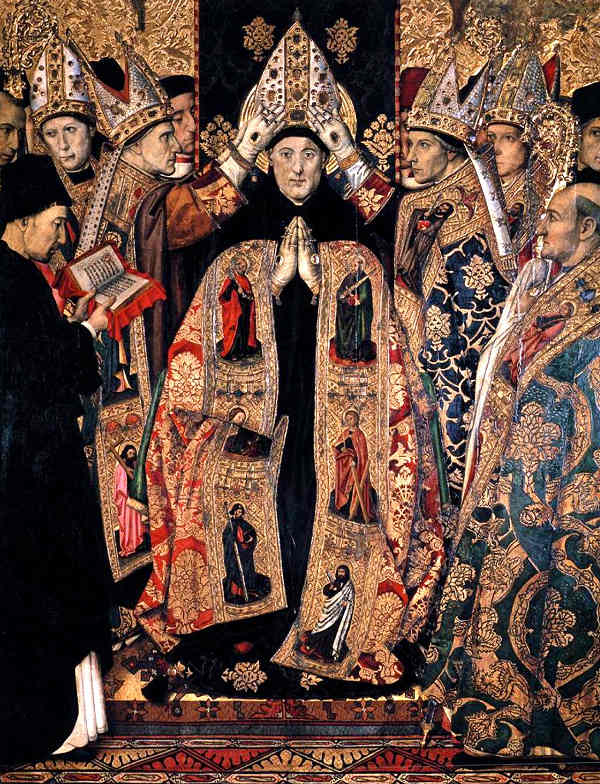 FIG 58 J.Huguet. 1466-1475. Consecration of St Augustin. MNAC. Barcelona. 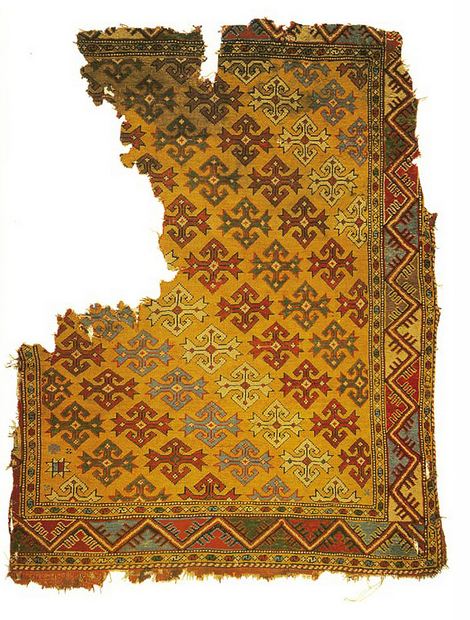 I suppose the rug above is close to the one of your fig.58, isn't it Pierre? Unfortunately, one can't be 100% sure about the field design. Best regards, Y 
Last edited by Yohann Gissinger; February 4th, 2012 at 01:10 AM. |
|
|

|
|
|
#2 |
|
Members
Join Date: Oct 2009
Posts: 153
|
Hi Yohann,
Indeed, the main border of your rug is almost identical with Huguet's. What a pity that the dear saint did not wish to step back a little. We could have enjoyed a little bit more of the field. On the saint’s right side, one can notice a few knots which might belong to a small Holbein pattern. Do you agree? I don’t see clearly the eyebelinde motif though. Does this border give us a hint about the origin of Huguet‘s rug? I don’t think so. The attribution to Spain, for all I know, might have been influenced by the painter’s nationality. The extant rug in your post is, unless I err, attributed to western Anatolia, sixteenth or seventeenth century, right? This main border is indeed rare in extant rugs. FIG 1 shows another quite similar version. Again its origin is claimed to be Anatolia. FIG 1: Anatolia, sixteenth century, Walter B. Denny, Anatolian Carpets, page 89 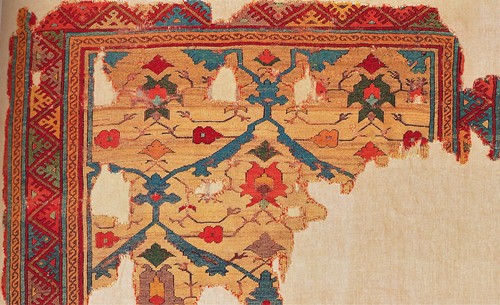 Time for the 100% un-substantiated theory of the month  : This border motif could be a much simplified version of a border pattern met on rugs of various origin, including Anatolia and Yomud Turkmen, as seen below: : This border motif could be a much simplified version of a border pattern met on rugs of various origin, including Anatolia and Yomud Turkmen, as seen below:FIG 2: Anatolia, fifteenth or sixteenth century, B. Balpinar & U Hirsch, Carpets, page 215. 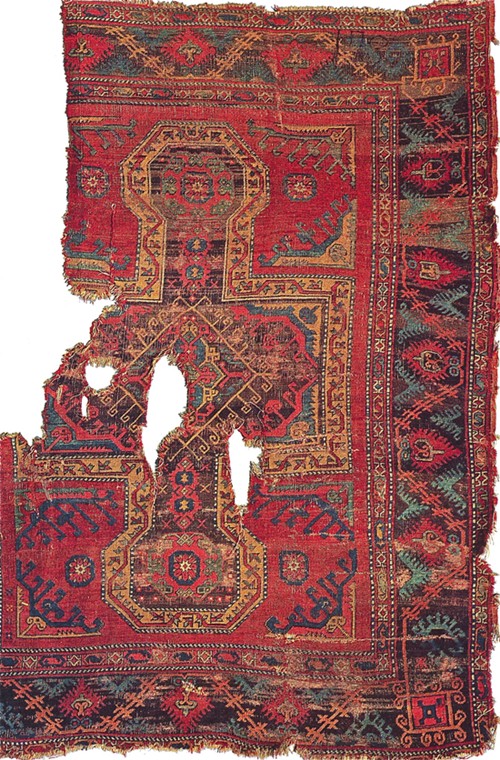 FIG 3: Yomud khali, eighteenth century? 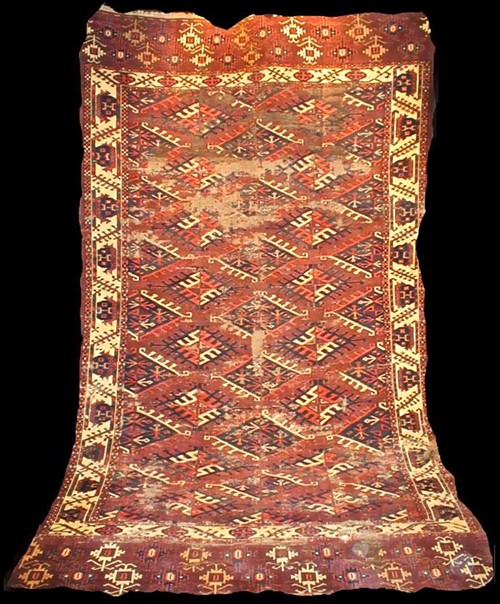 Regards Pierre |
|
|

|
 |
|
|